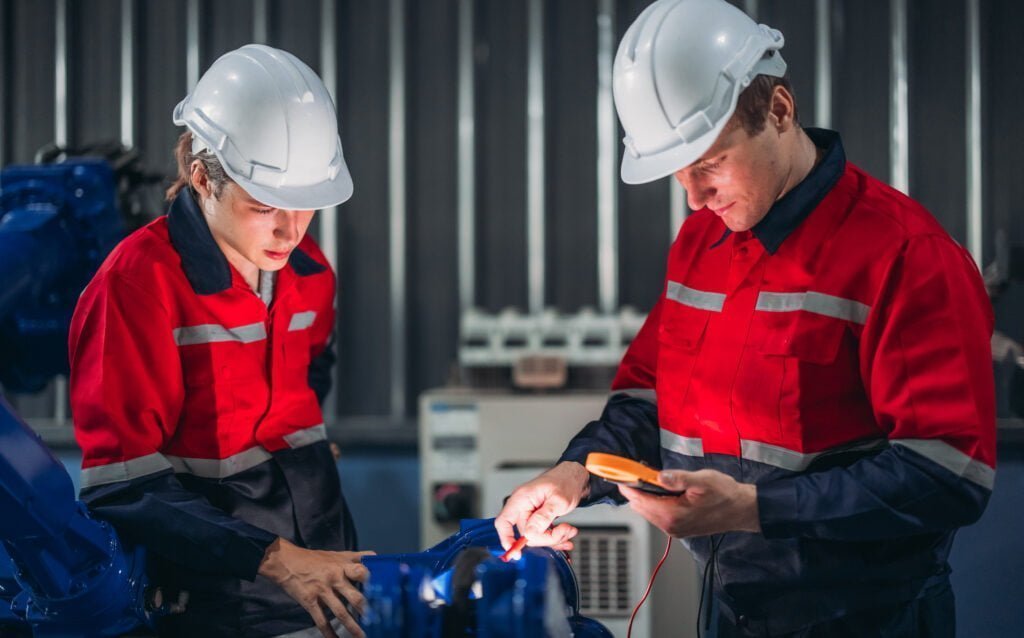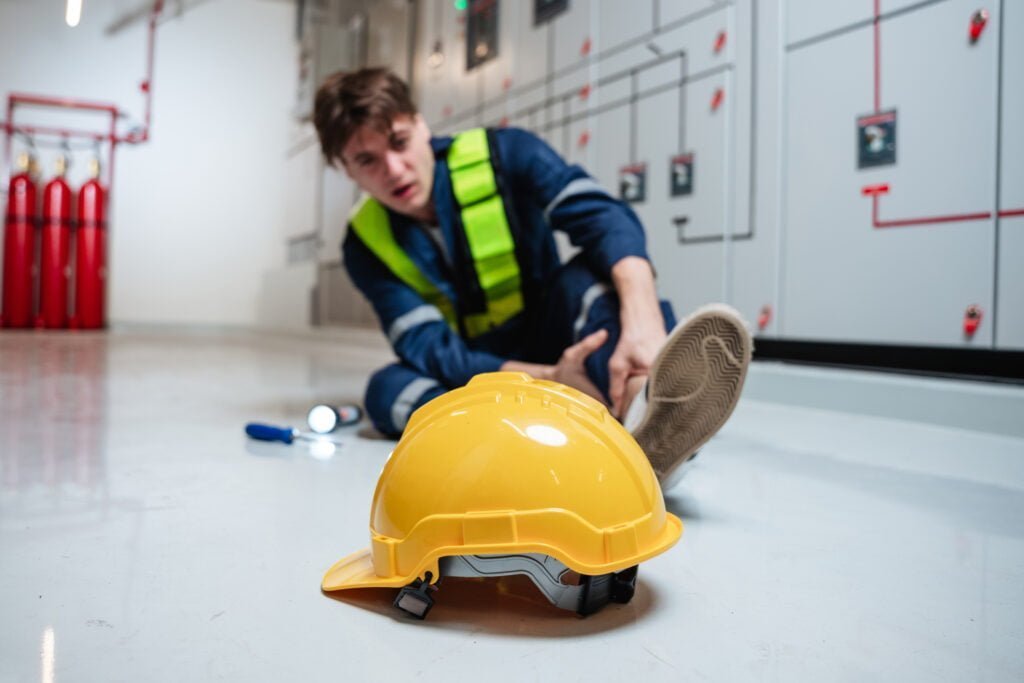
Struck-by hazards in construction refer to damages/injuries caused by objects forcefully impacting a person. It is important to note that these hazards can manifest in various accidents, such as workers being caught in equipment or materials or trapped between objects or structures. To determine if an event qualifies as a struck-by accident, one should consider whether the injury was caused solely by the impact of the object.
Around 17% are stuck-by incidents, electrocution incidents 7.6% are falling, and 35% of incidents of struck-by hazards are recorded in 2021. If the force of an object hitting a worker’s body causes the injury, it is classified as a struck-by accident. Conversely, if the injury results from being caught, pinned, or crushed between objects, it is considered a caught-in/between event. Struck-by hazards are categorized as,
- Struck by Flying Objects
In this, labor is struck by flying objects inappropriately, for instance, flying from a height. Workers are hesitant or non-trained to handle the objects and strike in between situations. Sometimes, objects propelled by electronic machinery in these types of situations are commonly listed as struck by flying objects.
- Struck by Falling Objects
Falling object accidents are common and deadly; they happen by falling material equipment on workers and causing them injury. Sometimes, tools are not maintained, and sometimes workers handle them wrongly. OSHA courses train employees to avoid minor glitches that later avoid bigger injuries.
- Struck by Swinging Objects
This kind of incident occurs when the workers get hit by the crane, swinging objects, excavator bucket or any other load. A little bit of non-serious behavior led towards critical injuries.
- Struck-by-Moving (ground-level) Objects
Another hazardous incident occurs when the worker gets hit by any vehicle, including trucks, cranes, forklifts, or others in the phase of motion.
OSHA 30 Courses & Struck-by Hazards

OSHA offers comprehensive knowledge of handling struck-by hazards in 30 and 10-hour training courses. Furthermore, the Occupational Safety and Health Administration (OSHA) reveals that approximately 150,000 construction site injuries occur annually, predominantly affecting workers aged 25 to 34 years. Notably, injuries frequently involve workers’ backs, spines, and trunks. Alarmingly, the National Institute for Occupational Safety and Health (NIOSH) identified the construction industry as the most perilous, with 1,224 fatalities in a single year.
Consequently, 15% of workers’ compensation costs are attributed to construction-related injuries, emphasizing the urgent need for enhanced safety measures and regulations in the construction sector. However, OSHA outlined and explained the guidelines of focusing on four hazards to prevent daily construction incidents. OSHA standards and situations secure the workers from death or lifetime injuries.
Major Consideration To Avoid Struck-by Hazards Situations
Construction sites are inherently dangerous places, but some steps can be taken to enhance safety and reduce the risk of being struck by objects. Here are five important tips to keep in mind:
Deliver and Administer Personal Protective Equipment (PPE):
Personal protective equipment is designed to safeguard workers from potential hazards on the job site. Workers and site visitors must wear properly fitted hard hats to protect their heads. Bright vests or reflective gear should also be worn in areas with low visibility or during nighttime work. Even in areas where PPE may not be mandatory, it is advisable to wear it to ensure easy identification and protection from unexpected falling or swinging objects.
Use Obstructions and Signs to Mark off Work zones: Properly
Barricading areas with a risk of falling objects is one of the most effective ways to reduce the danger. This not only helps protect workers but also alerts other team members, site visitors, and pedestrians to avoid entering marked areas that could be hazardous. Erecting signs and barricades around elevated work zones notify individuals below to be cautious of falling objects.
It is important to ensure that the barricades are sturdy enough to withstand strong winds or any other type of impact that could knock them over or blow them away.
Maintained all tools and Apparatus:
Unsecured equipment can easily fall from elevated surfaces and threaten workers or pedestrians below. Therefore, workers need to make it a routine practice to secure all tools and equipment while they are in use and at the end of each work day. Additionally, regular inspections should be conducted to ensure that tools and equipment are in safe working condition. If any damage or deficiency is detected in the equipment or its protective components, immediate repairs or replacements should be sought.
Implement effective communication systems:
Construction sites are noisy and busy, making communication challenging. To prevent unintentional injuries, establish clear communication systems such as hand signals, warning lights, two-way radios, overhead speakers, shorthand terminology, and danger words. These methods can help inform your team of hazardous situations and ensure that everyone is aware and can respond accordingly.
Offer Broad Training:
Training is crucial for maintaining a safe worksite. Make sure to train every new employee and conduct regular refresher courses. Additionally, offers safety training, risk assessments, and personal protective equipment (PPE) talks. Ensuring all workers have the credentials and knowledge to perform their tasks safely is important. Encourage open communication among team members to raise awareness of potential risks and promote overall safety.
By following these tips, construction workers can significantly reduce the risk of being struck by objects on the job site. It is also important to familiarize oneself with other common construction hazards, such as electrocution and falls, and take appropriate measures.
Summing Up
Focus four hazards and their preventive measures are the ultimate reasons for major injuries. Approximately 65.5% of deaths are incurred due to these hazards. However, to eliminate this, construction site dealers must hire workers who are trained in the OSHA courses; otherwise, uncertainty in handling the hazards is maximized. Also, industries provide timely training sessions to the workers with the equipment. In this way, practice regulates and maintains the objects.









